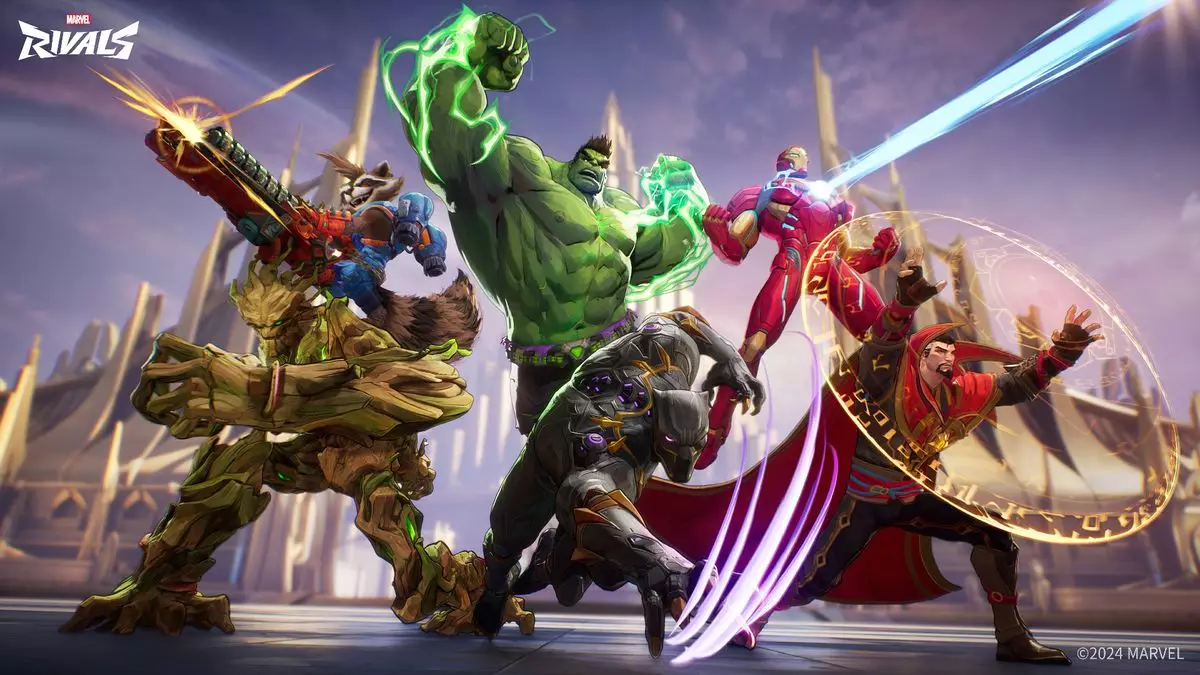The ever-evolving landscape of the Marvel Rivals gaming scene often leads avid players to fervently debate hero strengths and weaknesses. Recently, an astute fan on Reddit, known as Aggragating_Job9976, dove deep into the statistics of the game’s top players to present a tier list that refutes some commonly held beliefs about character effectiveness. While casual players may perceive formidable heroes like Hulk or Groot as paramount to success, the intricate layers of player performance reveal a different reality. Let’s unravel the findings and implications of this statistical exploration.
Aggragating_Job9976 utilized an impressive amount of data by analyzing the performance metrics of players on the TOP500 leaderboard. Instead of merely focusing on individual hero statistics, the analysis encompassed a broader spectrum. The methodology included tracking all heroes in which players accrued over three hours of gameplay—offering a robust dataset that extends beyond singular player performance to include different heroes available within the game. This reflects a meticulous approach to ensure the data’s relevance and accuracy. With nearly 600 rows of data gathered, despite a few player profiles remaining private, the depth of this analysis is commendable.
For many players, the sheer volume of statistics might seem overwhelming. However, the essence of the tier list crafted by Aggragating_Job9976 boils down to two principal criteria: pick rate and average win rate. This dual-faceted approach allows for a more comprehensive understanding of which heroes are not just popular but also effective in securing victories.
The tier list crafted by this sharp analyst unveils some startling rankings. For instance, characters traditionally regarded as dominant, such as Iron Fist, have been relegated to a B tier, while heroes such as Doctor Strange, Hela, Psylocke, Mantis, and Luna Snow have emerged as the elite at S rank. This shift in perception highlights how deeply statistical analysis can impact common gameplay beliefs.
Importantly, Aggragating_Job9976 emphasized that while raw win rates are telling, they don’t tell the whole story. The distinction made between win rates derived from a smaller sample versus a larger one carries significant weight. For example, Doctor Strange’s 64.6% win rate based on 2,900 games presents a more credible advantage than Peni Parker’s 70.5% based on only 400 matches. It’s a clear indictment of the correlation between sample size and credibility, reinforcing that larger data sets yield more reliable conclusions.
Delving deeper into pick rates provides further insight into the character selection dynamics within the upper echelons of play. Aggragating_Job9976 noted that the selection frequency among top players serves as an indicator of a hero’s potential effectiveness, suggesting that the most frequently chosen heroes are likely to yield the best results for aspiring players. This perspective goes beyond individual skill to touch upon collective player psychology—how trends in hero selection can shape overall game strategy.
While some might argue that some heroes, like Wolverine, deliver exceptional results for niche players, the reality is that overall accessibility and versatility are more critical for the majority who play at lower ranks. This brings a level of pragmatism to hero selection, illustrating the psychological nuance of multiplayer gaming communities and how statistics can expose underlying truths.
Lastly, the last surprising revelation, such as Scarlet Witch’s D tier ranking, paints a vivid picture of the discrepancies between player perception and statistical reality. This backlash against perceived strong characters serves not only to recalibrate expectations among players but also invites deeper consideration of how hero balance is represented in the evolving meta.
Reflecting on Aggragating_Job9976’s findings provokes critical thought regarding how players assess their performance and the heroes they choose. In a universe as vibrant as that of Marvel Rivals, understanding the scientific and statistical framework behind hero effectiveness may just be key to unlocking true competitive potential in the game.
This statistical exploration not only clarifies misconceptions about hero capabilities but also encapsulates the intricate relationship between player behavior, character selection, and strategic success. What may seem chaotic and random can, through careful analysis, reveal a structured and insightful interpretation of gameplay dynamics.

